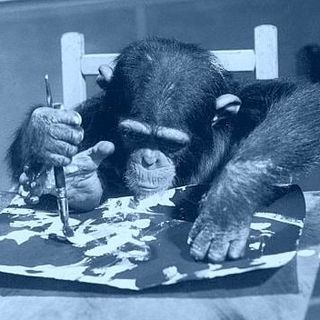
Fearing Pain Actually Makes You Feel More Pain
Bucking up is science.

The power of a positive mental attitude apparently extends to our expectation of pain.
A new brain imaging study published in the journal Nature Human Behaviour found that expectations about pain intensity can become self-fulfilling prophecies. But even more interesting, the study found that the expectation-pain cycle persisted even when the same non-painful stimulus was administered again, meaning that our bodies don’t “learn” from experiencing less pain than expected.
“We discovered that there is a positive feedback loop between expectation and pain,” said senior author Tor Wager, a professor of psychology and neuroscience at the University of Colorado Boulder. “The more pain you expect, the stronger your brain responds to the pain. The stronger your brain responds to the pain, the more you expect.”
For decades, researchers have wondered how our mental state and expectations about a situation might influence how we experience it. The new study is the first to directly illustrate the loop between expectations and pain and the neural mechanisms underlying it.
“We wanted to get a better understanding of why pain expectations are so resistant to change,” said Marieke Jepma, lead author and now a researcher at the University of Amsterdam.
The researchers recruited 34 subjects and taught them to associate one symbol with low heat and another with high, painful heat. The subjects were monitored in an fMRI machine, which measures blood flow to the brain. The subjects were then shown a series of pain cues, asked to rate their pain, then had heat — never hotter than a cup of coffee — applied to their bodies, and then were asked to rate the pain they felt.
Unbeknownst to the subjects, heat intensity was not actually related to the preceding cue.
Read more: The Amount of Pain Kids Expect is the Amount of Pain Kids Feel
The study found that when subjects expected more heat, brain regions involved in threat and fear were more activated as they waited. Regions involved in the generation of pain were more active when they received the stimulus. Participants reported more pain with high-pain cues, regardless of how much heat they actually got.
“This suggests that expectations had a rather deep effect, influencing how the brain processes pain,” said Jepma.
Surprisingly, their expectations also highly influenced their ability to learn from experience. Many subjects demonstrated high “confirmation bias” – the tendency to learn from things that reinforce our beliefs and discount those that don’t. For instance, if they expected high pain and got it, they might expect even more pain the next time. But if they expected high pain and didn’t get it, nothing changed.
Whether in the context of pain or mental health, the authors suggest this study can help us better understand how our own confirmation bias impacts our lived experiences.
“Just realizing that things may not be as bad as you think may help you to revise your expectation and, in doing so, alter your experience,” said Jepma.
Related


We’ve All Got The Wrong Idea About Creativity
